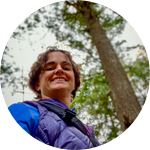Please wait...
About This Project
Moose are not recognized as a resident species in Wisconsin, likely due to insufficient data. Using trail cameras and field observations, I aim to test the hypothesis that Wisconsin hosts a self-sustaining moose population, with recurring adults, breeding, and calf recruitment. Findings shared with the Wisconsin DNR, the National Heritage Inventory, and other agencies will support efforts for formal recognition and conservation, highlighting the species' ecological role and habitat needs.
More Lab Notes From This Project

Browse Other Projects on Experiment
Related Projects
How do polar bears stay healthy on the world's worst diet?
Polar bears survive almost entirely on seal fat. Yet unlike humans who eat high-fat diets, polar bears never...
Uncovering hidden insect diversity associated with a likely undescribed gall-forming midge
Does a likely undescribed species of gall-forming midge (pers. comm. Ray Gagné) on Eriodictyon plants (Yerba...
Macrofungi of the California archipelago
The eight islands of the California Archipelago are a well-studied biodiversity hotspot — but we know almost...



